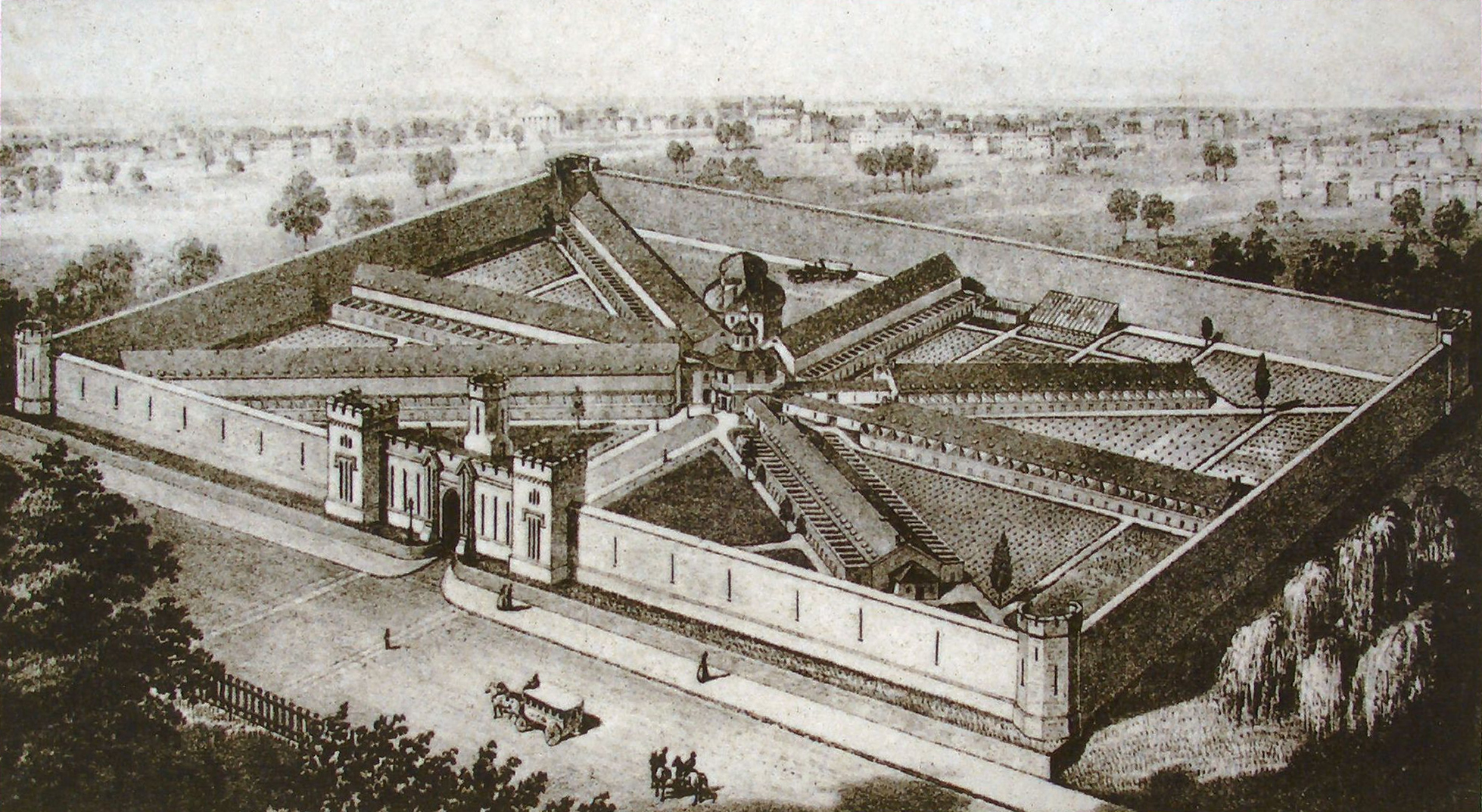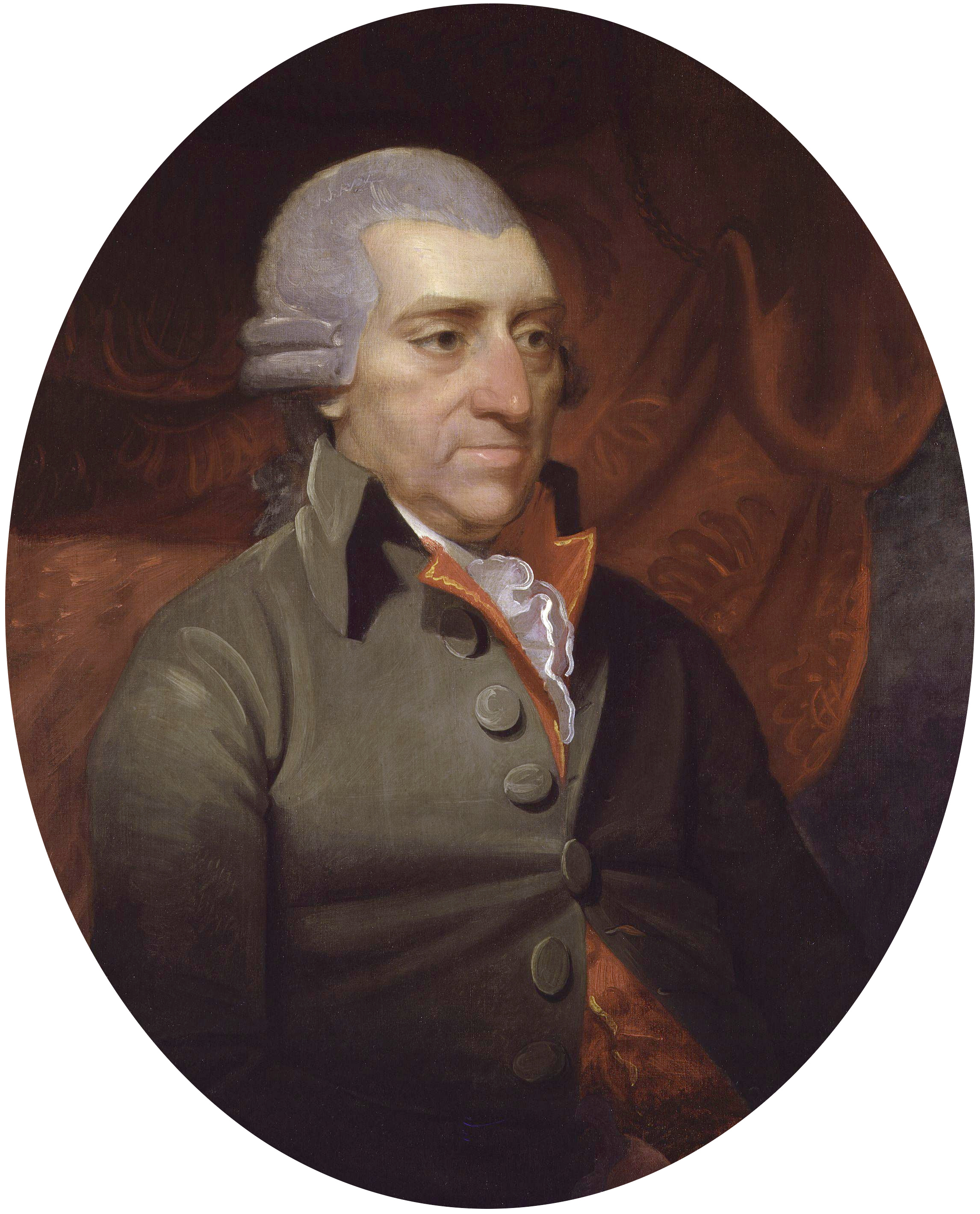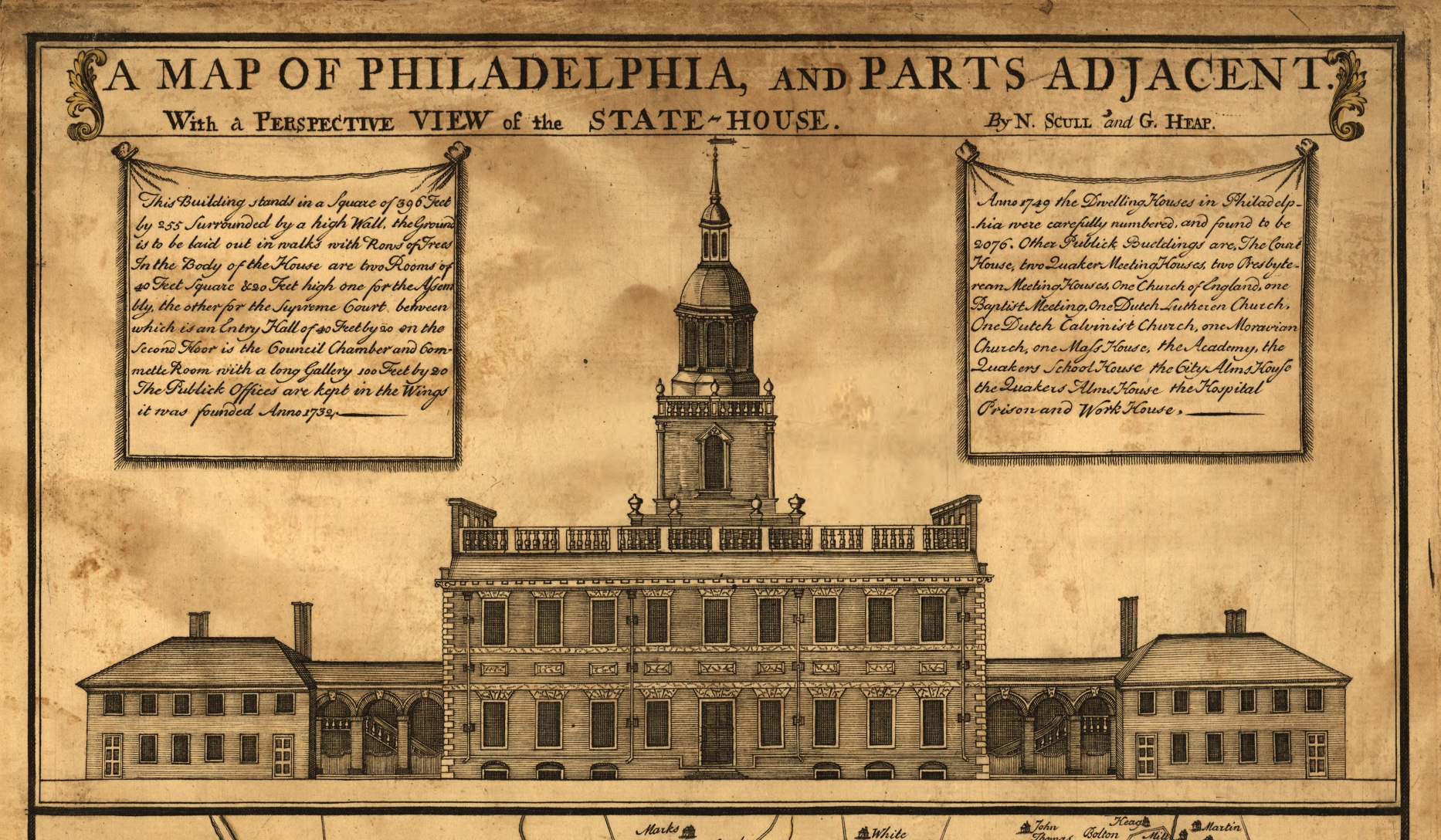|
John Haviland
John Haviland (15 December 1792 – 28 March 1852) was an English-born American architect who was a major figure in American Neo-Classical architecture, and one of the most notable architects working from Philadelphia in the 19th century. Biography Born 15 December 1792, at Gundenham, near Wellington, England, Haviland was apprenticed in 1811 to a London architect. In 1815 he unsuccessfully pursued an appointment to the Russian Imperial Corps of Engineers. In Russia, however, he met George von Sonntag and John Quincy Adams, who encouraged him to work in the United States. He arrived in Philadelphia in 1816, and soon established himself as one of the few professional architects in the city. By 1818, Haviland produced a book, ''The Builder's Assistant'', which appeared in three volumes over several years. This publication was one of the earliest architectural pattern books written and published in North America, and likely the first to include Greek and Roman classical orders. ... [...More Info...] [...Related Items...] OR: [Wikipedia] [Google] [Baidu] |
John Neagle
John Neagle (November 4, 1796 – September 17, 1865) was a fashionable American painter, primarily of portraits, during the first half of the 19th century in Philadelphia. Biography Neagle was born in Boston, Massachusetts. His training in art began with instruction from the drawing-master Pietro Ancora and an apprenticeship to Thomas Wilson, a well-connected painter of signs and coaches in Philadelphia. Wilson introduced him to the painters Bass Otis and Thomas Sully, and Neagle became a protégé of the latter. In 1818 Neagle decided to concentrate exclusively on portraits, setting up shop as an independent master. Aside from brief sojourns in Lexington, Kentucky, and New Orleans, Louisiana, he spent his career in Philadelphia, Pennsylvania, where he died. In May 1826 he married Sully's stepdaughter Mary, and for a time the son-in-law and father-in-law dominated the field of portraiture in the city. Neagle served as Director of the Pennsylvania Academy of the Fine Art ... [...More Info...] [...Related Items...] OR: [Wikipedia] [Google] [Baidu] |
Atwater Kent Museum
The Philadelphia History Museum was a public history museum located in Center City, Philadelphia from 1938 until 2018. The museum occupied architect John Haviland's landmark Greek Revival structure built in 1824–1826 for the Franklin Institute. The Museum operated as a city agency as part of Philadelphia's Department of Recreation. The building was listed on the National Register of Historic Places on August 1, 1979. History The museum was established through the efforts of Philadelphia Mayor S. Davis Wilson, Frances Wistar, president of the Philadelphia Society for the Preservation of Landmarks, and A. Atwater Kent, radio pioneer and inventor. In 1938 Kent purchased the former Franklin Institute building, which the Institute had vacated in 1933,, p.36 and gifted the building to the city for use as a public history museum. Following renovations carried out by the Works Progress Administration, the Museum opened in 1941. After years of declining attendance and financial shortf ... [...More Info...] [...Related Items...] OR: [Wikipedia] [Google] [Baidu] |
State Correctional Institution – Pittsburgh
State Correctional Institution – Pittsburgh (historically known as the " Western Penitentiary," "Western Pen," and "The Wall") was a low-to-medium security correctional institution, operated by the Pennsylvania Department of Corrections, located about five miles west of Downtown Pittsburgh and within city limits. The facility is on the banks of the Ohio River, and is located on 21 acres of land. (12 acres within the perimeter fence.) It was the first prison west of the Atlantic Plain as well as a major Civil War prison in 1863–1864. On January 26, 2017, Governor of Pennsylvania Tom Wolf announced the closing of this facility. History Western Penitentiary was designed by John Haviland and built in 1826 two miles south-east from the current facility by the architect Strickland. The original site is now home to the National Aviary. During Charles Dickens visit to the city March 20–22, 1842, he visited the original prison and some scholars believe he based the classic ''A ... [...More Info...] [...Related Items...] OR: [Wikipedia] [Google] [Baidu] |
New Jersey State Prison
The New Jersey State Prison (NJSP), formerly known as Trenton State Prison, is a state men's prison in Trenton, New Jersey operated by the New Jersey Department of Corrections. It is the oldest prison in New Jersey and one of the oldest correctional facilities in the United States. It is the state's only completely maximum security institution, housing the most difficult and/or dangerous male offenders in the inmate population. NJSP operates two security units and provides a high level of custodial supervision and control. Professional treatment services, such as education and social work, are a priority at the facility. The Bureau of State Use Industries operated the bedding and clothing shops that were once located in Shop Hall at the facility. These industries have been relocated to South Woods State Prison. NJSP also housed New Jersey's death row for men and execution chamber until the state abolished capital punishment in 2007. One notable inmate is Jesse Timmendequas, who ... [...More Info...] [...Related Items...] OR: [Wikipedia] [Google] [Baidu] |
Naval Medical Center Portsmouth (Portsmouth, Virginia)
The Naval Medical Center Portsmouth (NMCP), formerly Naval Hospital Portsmouth, and originally Norfolk Naval Hospital, is a United States Navy medical center in Portsmouth, Virginia, United States. It is the oldest continuously running hospital in the Navy medical system. History The historic Portsmouth Naval Hospital building was designed by architect John Haviland (1792–1852) and built in 1827. It is a three-story granite and Freestone building on a basement. Its form is that of a hollow rectangle, measuring wide by deep. The front facade features a wide Doric order portico with ten columns. The building's interior was reconstructed in 1907, and a shallow dome was added to the roof. Located on the property are a contributing marker erected by Haviland over the grave of Major Saunders, one time commander of Forts Nelson and Norfolk, who died March 15, 1810; and a memorial cannon commemorating Fort Nelson. Fort Nelson, now demolished, was near the hospital's site. a ... [...More Info...] [...Related Items...] OR: [Wikipedia] [Google] [Baidu] |
John Howard (prison Reformer)
John Howard FRS (2 September 1726 – 20 January 1790) was a philanthropist and early English prison reformer. Birth and early life Howard was born in North London, either in Hackney or Enfield. His father, also John, was a wealthy upholsterer at Smithfield Market in the city. His mother Ann Pettitt, or Cholmley, died when he was five years old, and, described as a "sickly child", he was sent to live at Cardington, Bedfordshire, some fifty miles from London, where his father owned property. His father, a strict disciplinarian with strong religious beliefs, sent the young John to a school in Hertford run by John Worsley. He went on from there to a dissenting academy run in London by John Eames. After school, John was apprenticed to a wholesale grocer to learn business methods, but he was unhappy. When his father died in 1742, he was left with a sizeable inheritance but no true vocation, a Calvinist faith and a quiet, serious disposition. Early travels In 1748, Howard left ... [...More Info...] [...Related Items...] OR: [Wikipedia] [Google] [Baidu] |
Egyptian Revival
Egyptian Revival is an architectural style that uses the motifs and imagery of ancient Egypt. It is attributed generally to the public awareness of ancient Egyptian monuments generated by Napoleon's conquest of Egypt and Admiral Nelson's defeat of the French Navy at the Battle of the Nile in 1798. Napoleon took a scientific expedition with him to Egypt. Publication of the expedition's work, the ''Description de l'Égypte'', began in 1809 and was published as a series through 1826. The size and monumentality of the façades discovered during his adventure cemented the hold of Egyptian aesthetics on the Parisian elite. However, works of art and architecture (such as funerary monuments) in the Egyptian style had been made or built occasionally on the European continent and the British Isles since the time of the Renaissance. History Egyptian influence before Napoleon Much of the early knowledge about ancient Egyptian arts and architecture was filtered through the lens of the Classi ... [...More Info...] [...Related Items...] OR: [Wikipedia] [Google] [Baidu] |
Independence Hall
Independence Hall is a historic civic building in Philadelphia, where both the United States Declaration of Independence and the United States Constitution were debated and adopted by America's Founding Fathers. The structure forms the centerpiece of the Independence National Historical Park and has been designated a UNESCO World Heritage Site. The building was completed in 1753 as the Pennsylvania State House and served as the capitol for the Province and Commonwealth of Pennsylvania until the state capital moved to Lancaster in 1799. It was the principal meeting place of the Second Continental Congress from 1775 to 1781 and was the site of the Constitutional Convention in the summer of 1787. A convention held in Independence Hall in 1915, presided over by former U.S. president William Howard Taft, marked the formal announcement of the formation of the League to Enforce Peace, which led to the League of Nations in 1920 and the United Nations, a quarter century later. Pre ... [...More Info...] [...Related Items...] OR: [Wikipedia] [Google] [Baidu] |
Walnut Street Theater
The Walnut Street Theatre, founded in 1809 at 825 Walnut Street, on the corner of S. 9th Street in the Washington Square West neighborhood of Philadelphia, is the oldest operating theatre in the United States. The venue is operated by the Walnut Street Theatre Company, a non-profit organization, and has three stages: the Mainstage, for the company's primary and larger productions, the Independence Studio on 3, a studio located on the building's third floor for smaller productions, and the Studio 5 on the fifth floor, which is rented out for independent productions. In May 2019, the Walnut Street Theatre announced a major expansion, to begin in 2020. History The Walnut Street Theatre was built by the Circus of Pepin and Breschard, which toured the United States from 1807 until 1815. Pepin and Breschard constructed numerous venues in cities along the East Coast of the United States, which often featured, along with performances of their circus, classical plays as well as hors ... [...More Info...] [...Related Items...] OR: [Wikipedia] [Google] [Baidu] |
Old City Hall (Philadelphia)
Old City Hall located at Chestnut Street at 5th Street in the Independence Hall complex of Independence National Historical Park in Center City, Philadelphia, was built in 1790–91 in the Federal style. The architect was David Evans, Jr. Although originally intended as Philadelphia's City Hall, it served as the home of the U.S. Supreme Court from the completion of its construction in 1791 until 1800, when the national capital was moved to Washington, D.C. Three chief justices, John Jay ( Jay Court), John Rutledge ( Rutledge Court), and Oliver Ellsworth ( Ellsworth Court), officiated the Supreme Court from this location. Afterward, the building continued to serve as Philadelphia's City Hall until 1854. It is a contributing property to Independence National Historical Park. The owner is the City of Philadelphia, which leases the building to the National Park Service The National Park Service (NPS) is an agency of the United States federal government within the U.S. Dep ... [...More Info...] [...Related Items...] OR: [Wikipedia] [Google] [Baidu] |
William Ludwig Von Sonntag
William is a male given name of Germanic origin.Hanks, Hardcastle and Hodges, ''Oxford Dictionary of First Names'', Oxford University Press, 2nd edition, , p. 276. It became very popular in the English language after the Norman conquest of England in 1066,All Things William"Meaning & Origin of the Name"/ref> and remained so throughout the Middle Ages and into the modern era. It is sometimes abbreviated "Wm." Shortened familiar versions in English include Will, Wills, Willy, Willie, Bill, and Billy. A common Irish form is Liam. Scottish diminutives include Wull, Willie or Wullie (as in Oor Wullie or the play ''Douglas''). Female forms are Willa, Willemina, Wilma and Wilhelmina. Etymology William is related to the given name ''Wilhelm'' (cf. Proto-Germanic ᚹᛁᛚᛃᚨᚺᛖᛚᛗᚨᛉ, ''*Wiljahelmaz'' > German ''Wilhelm'' and Old Norse ᚢᛁᛚᛋᛅᚼᛅᛚᛘᛅᛋ, ''Vilhjálmr''). By regular sound changes, the native, inherited English form of the name sho ... [...More Info...] [...Related Items...] OR: [Wikipedia] [Google] [Baidu] |

_(14594709667).jpg)




